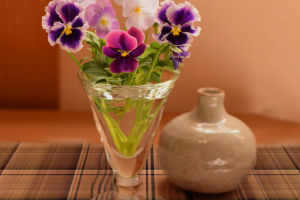The vibrant hues of roses typically adorn walls and gardens, painting a picturesque scene in early summer. Yet, the frustration of witnessing your rose plants fail to bloom can be disheartening.
While the surrounding environment may seem conducive to their growth, several factors can hinder a rose's blossoming potential.
Understanding the intricate requirements of rose care, including soil conditions, pruning techniques, and pest management, is vital in rejuvenating your rose garden and ensuring a bountiful bloom, even amidst the splendor of early summer.
This article delves into the complexities of nurturing roses, addressing common pitfalls, and offering practical solutions to encourage their vibrant blossoms and revive the charm of your garden.
When your roses fail to bloom despite the favorable conditions of early summer, the first factor to consider is soil quality.
Roses thrive in well-draining, nutrient-rich soil with a balanced pH level.
Conducting a soil test can provide valuable insights into its composition and aid in identifying necessary amendments.
Lack of essential nutrients, such as nitrogen, phosphorus, and potassium, can significantly impede the blooming process.
Implementing a suitable fertilization regimen tailored to the specific needs of your rose varieties can reinvigorate their growth and encourage a prolific flowering season.
Proper pruning techniques play a crucial role in stimulating rose blooms. Inadequate or incorrect pruning can restrict air circulation and sunlight penetration, leading to stunted growth and diminished flowering.
Understanding the distinct pruning requirements for different rose types, including hybrid teas, floribundas, and climbers, is essential in promoting healthy new growth and encouraging abundant blossoms.
Regular pruning sessions during the dormant season can help maintain the desired shape and size of rose bushes, allowing for improved air circulation and light exposure, both vital for robust and vibrant blooms.
Pest infestations and diseases can also thwart the blooming potential of your rose plants.
Common pests such as aphids, spider mites, and thrips, diseases like powdery mildew and black spots, can weaken the plants and impede their ability to produce flowers.
Implementing integrated pest management techniques, such as regular inspections, natural predators, and appropriate pesticides, can effectively control pest populations and prevent the spread of diseases, ensuring that your rose plants remain healthy and vibrant throughout the blooming season.
Furthermore, environmental factors, including inadequate sunlight exposure and improper watering practices, can hinder the development of rose blooms. Roses require ample sunlight, ideally six to eight hours a day, to thrive and produce an abundance of flowers.
Ensuring rose plants receive adequate sunlight exposure can significantly enhance their overall health and blooming capacity.
Moreover, maintaining a consistent watering schedule and providing sufficient moisture without waterlogging the soil is essential in preventing stress-induced bloom failure and ensuring optimal growth and flowering.
By addressing these critical factors and implementing appropriate care techniques, you can rejuvenate your rose garden and relish the beauty of blooming roses amidst the splendor of early summer.
With the right nurturing and a thorough understanding of their needs, your rose plants can flourish and adorn your walls with an array of breathtaking blossoms, adding a touch of elegance and charm to your outdoor sanctuary.


